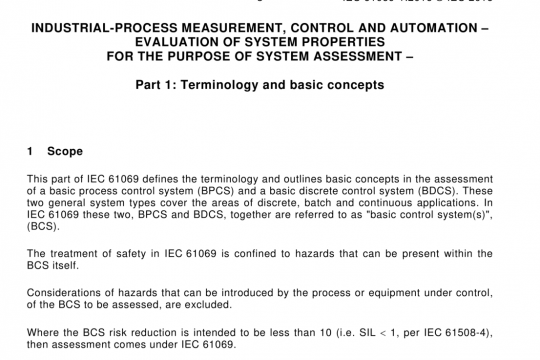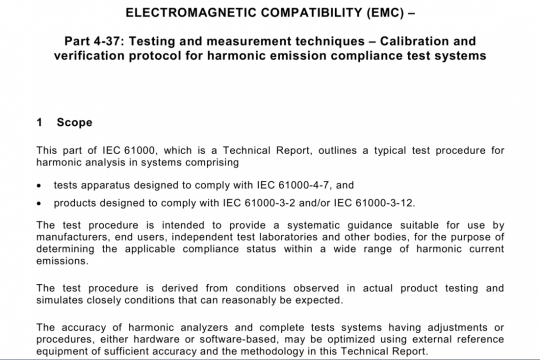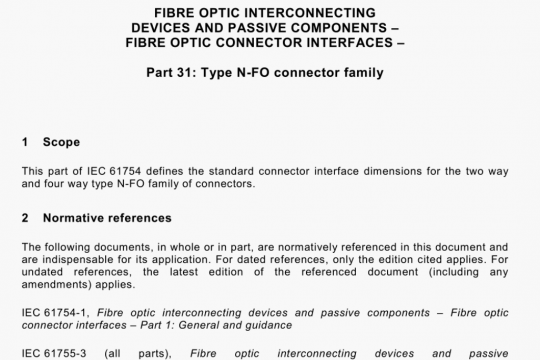PD IEC TR 63191 pdf free download
PD IEC TR 63191 pdf free download.Demand side power quality management.
4.2 Phase 1: Define the context, the objectives and the constraints
4.2.1 Goal of phase 1
• Ensure that the motivations, implications and objectives of the organization are clearly defined.
• Ensure that the organizational, technical and financial context will allow the creation and maintenance of a demand side power quality (DSPQ) improvement plan.
4.2.2 Context of the DSPQ improvement plan
Today, an organization wishing to deploy a DSPQ improvement plan faces a number of obstacles, including:
• the design of the plan, defining its content and its boundaries according to the needs and targeted objective;
• the evaluation of the cost/benefits of implementing the plan, supporting the decision;
• the technical difficulties associated with the implementation of the plan.
4.2.3 Motivations of the organization
Mainly to increase its economic competitiveness, quality of services and data security, the
organization may design its DSPQ improvement plan according to its objectives, for example:
• ensure the energy availability by minimizing the risk of unwanted tripping and black out;
• avoid supplier penalties;
• avoid deterioration of materials and reduction of their lifetime;
• improve the energy efficiency of installations.
4.2.4 Boundaries of the DSPQ improvement plan
The organization defines the boundaries of the DSPQ improvement plan, and more specifically the sites, the zones, the relevant sources and loads.
See Annex A.
4.2.5 Stakeholders of the plan
The organization may identify the specific needs of each type of user of a DSPQ improvement plan which are as follows.
• Senior management: defines the organization objectives relative to energy management in general and energy measurement in particular, including the budget and priorities.
• Technical director: allocates the resources within the facility and reports on the results. The technical director is capable of evaluating the targeted objectives and those actually achieved, in both energy performance and financial terms.
• Operating and maintenance personnel: tasked with using the measurement system to check and ensure efficient operation by taking corrective measures in the event of deviations in energy performance, by eliminating waste and performing preventive maintenance to reduce deterioration in energy performance. The operating and maintenance personnel can use the measurement system for the process or the equipment under their responsibility.
• Energy manager: provides expertise related to energy management, at site or organizational level. The DSPQ improvement plan is one of the tools the energy manager uses to implement an efficient energy management system. The energy manager is responsible for making sure the scope of measured data is consistent with energy management objectives.
• Installers and system integrators: are responsible for the setup of the measurement and monitoring system. They need to make sure the measurement system is working as expected by the DSPQ improvement plan. They may be internal or external.
• Other external stakeholders: these users can include regulating organizations, service providers, customers, suppliers, architects, facility managers or other organizations.
4.2.6 Budget
The organization defines the budget allocated to the DSPQ improvement plan according to its
objectives.
4.2.7 Planning
The DSPQ improvement plan may be implemented in phases according to priorities in order to meet the organization’s budgetary constraints.
The organization puts in place a schedule for the implementation of the DSPQ improvement plan. It may indicate the most important milestones of the project.PD IEC TR 63191 pdf download.




